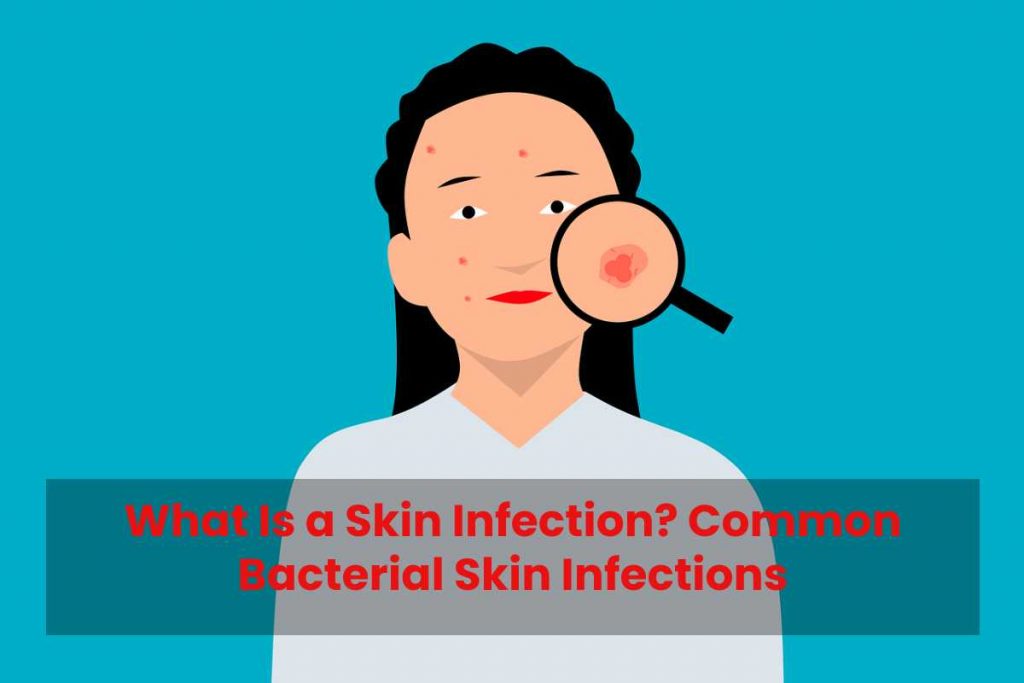A skin infection is when germs (bacteria, viruses, or fungi) infect your skin, and sometimes the deep tissues underneath it—sometimes caused by a parasite invade your skin. You can get a skin disease any time your skin breaks down, whether from a cut, tattoo, piercing, puncture, sting, or bite.
Some infections occur at the skin’s surface but can start more profound in the injury. You canister and treat minor skin infections at home, but you may have to go to the doctor or crisis room for an extra serious one.
Table of Contents
Skin Infection Symptoms
If you believe your skin may be infected, watch for these signs:
- Pus or liquid leaks out of the cut
- Red skin around the injury
- A red line that runs from the amount to your heart
- A pimple or yellowish crust on top
- Sores to look like blisters
- Pain that gets poorer after a few days
- bump that gets inferior after a few days
- A fever
- The injury hasn’t healed after ten days
It canister be hard to tell the dissimilarity flanked by an infection and eczema, chiefly in children. People with eczema often get skin infections as the breaks in their skin let germs. If an eczema treatment doesn’t work or the rash worsens, it could be an infection.
Skin Infection Prevention
Proper handwashing is essential. Use soap and tepid water to scrub your hand for 20 seconds, then dip and dry with a fresh towel or paper towel. Use a hand sterilizer if soap and water aren’t nearby.
If you’re a contestant or go to the gym often, use a clean towel as a barrier between your skin and shared surfaces like exercise machines or locker room benches. If the gym has antiseptic or more spotless paper towels to clean gym equipment by and after you’re on it, use them. Shower and wash your clothing and towel after each workout.
Keep it clean if you have a minor cut or break in your skin. Wash it with warm irrigate and soap. You also can use an antibiotic salve like bacitracin or neomycin and wrap it with a clean bandage.
If you have a significant skin wound, especially one with stitches, check with your doctor for proper care instructions.
Infectious Diseases vs. Infections: Quick Definition
Before departing into the four types, there’s a quick separation of terms. Infectious diseases and infections remain used interchangeably. However, there are slight distinctions between the two. An infectious disease, as definite by the Encyclopedia Britannica, is:
“A process caused via an agent, often a type of microorganism, impairs a person’s health. In many cases, an infectious illness can be spread from person to person, either directly (e.g., via skin contact) or indirectly (e.g., via contaminated food or water).”
While an Infection Defines as:
“The attack of and replication in the body by any of a variety of agents—including bacteria, viruses, fungi, protozoans, and worms—as well as the reaction of tissues to their presence or to the toxins they produce.”
By these definitions, when children receive the varicella vaccine—the vaccine used to prevent chickenpox—they acquire an infection without producing the infectious disease.
All infectious diseases result from an infection, but not all conditions cause contagious diseases. Now that that’s in order, what are the types of infectious diseases caused?
What are the Symptoms of Skin Disease?
The symptom of a skin infection also varies depending on the type. Common symptoms take in redness of the skin and a rash. You might also practice other symptoms, such as itching, pain, and tenderness.
Skin infections can increase beyond the skin and into the bloodstream. When this happens it can become life-threatening. See a doctor if you have a pus-filled blister or skin infection that doesn’t improve or gets progressively worse.
How is a skin Infection Diagnosed?
An excellent medical exam is the best determining what causes a skin infection. Often, doctors can recognize the type of skin infection based on the exterior and location.
Your doctor might ask about your symptom and closely study any bumps, rashes, or lesions. For example, ringworm often causes a distinct circular, scaly rash. In other cases, a sample of skin cells can help your doctor determine the type of infection.
How is a Skin Infection Treated?
Treatment depends on the reason of the infection and the severity. Some types of viral skin infections may improve within days or weeks.
Bacterial infections remain treated with topical or oral antibiotics applied to the skin. If the strain of bacteria is defiant to treatment, treating the condition may require intravenous antibiotics in thehow hospital.
Conclusion:
There are several habits to reduce the chances of developing a skin infection. Frequent hand washing is single of the best conduct.
Skin infections canister vary from mild to severe. Make a meeting with your doctor if you have a skin condition causing pain. Your doctor will be clever to provide the essential treatment for recovery.
